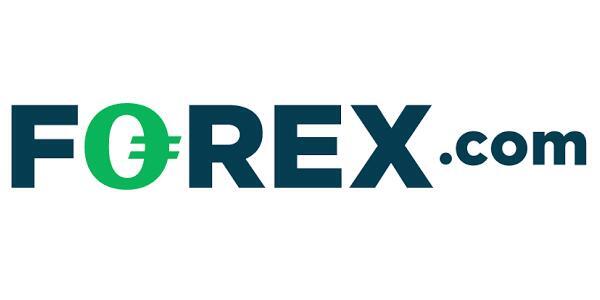Chinese currency Wikipedia

The note was also nicknamed a “watermelon note” because of the watermelon-shaped 0’s in the large numeral 100 on the reverse; the large numeral 100 was surrounded by an ornate design that occupied almost the entire note. The most widely recognised Cockney rhyming slang terms for money include ‘pony’ which is £25, a ‘ton’ is £100 and a ‘monkey’, which equals £500. Also used regularly is a ‘score’ which is £20, a ‘bullseye’ is £50, a ‘grand’ is £1,000 and a ‘deep sea diver’ which is £5 (a fiver). A fifty-dollar note is also known colloquially as a “pineapple” or the “Big Pineapple” because of its yellow colour. Once you’ve got your renminbi in hand, be sure to take some time to examine it and think about its history, its future and all the different ways there are to refer to it in both English and Chinese.
Perhaps the arrival of the first rhino in Britain suggested the sense of something valuable. The “C” in C-note refers to the Roman numeral for 100, which was printed on $100 bills, and it can also refer to a century. Legally, you are permitted to bring 20,000 CNY, 5,000 USD or the equivalent in other foreign currencies into China with you when you come. Since this number can sometimes change, be sure to check to make sure this is still the case before you travel. Sometimes if a customer tries to pay in cash but does not have the exact amount, shop owners and taxi drivers will say that they cannot make change and request that the customer pays using WeChat or Alipay instead.
What are the key differences between CNH and CNY?
China uses currency controls to maintain the value of the Chinese Yuan at a favorable level. Every day the PBOC sets a midpoint value against the U.S. dollar, based on previous trading sessions and movements in international currency markets. The price of the yuan is allowed to trade within 2% of that price.

As of 2019, renminbi banknotes are available in denominations from ¥0.1, ¥0.5 (1 and 5 jiao), ¥1, ¥5, ¥10, ¥20, ¥50 and ¥100. These denominations have been available since 1955, except for the ¥20 notes (added in 1999 with the fifth series) ¥50 and ¥100 notes (added in 1987 with the fourth series). Buy google stock On rare occasions, larger yuan coin denominations such as ¥5 have been issued to commemorate events but use of these outside of collecting has never been widespread. Due to inflation, banknotes or coins with a value of less than one yuan, including one jiao and five jiao, are rarely used in China.
Chinese Money Today
The use of shell money is attested to in the Chinese writing system. The traditional characters for ‘goods’ (貨), ‘buy/sell’ (買/賣), and ‘monger’ (販), in addition to various other words relating to ‘exchange’, all contain the radical 貝, which is the pictograph for https://investmentsanalysis.info/ shell (simplified to 贝). The extent of the circulation of shell money is unknown, and barter trade may have been common. However, copies of cowry shells made out of bone, wood, stone, lead and copper were common enough to presume that they were used in trade.
- As a result, there are different regulations and restrictions imposed upon these currencies and their usage.
- That said, there’s still a great deal of confusion when it comes to Chinese currency.
- ATMs are common in towns and cities, but remember to withdraw cash in advance if you’re headed into the countryside, where cash machines are few and far between.
- «I sometimes think that the whole renminbi/yuan issue is a sinister plot by the Chinese designed specifically to deter people from discussing Chinese currency policy,» he joked.
Below, you’ll find Chinese Yuan Renminbi rates and a currency converter. Similarly the yuan’s share of global payments was 1.97 per cent in September, the fifth most active currency, while the US dollar was in first position, commanding 38.45 per cent of payments. The latest data from the International Monetary Fund showed the yuan’s share of global currency reserves was 2 per cent in the second quarter of 2020, well below the US dollar’s 61.3 per cent. This arrangement has resulted in two market prices for the yuan’s value against foreign currencies, albeit with only a slight difference. The onshore yuan, with its abbreviation CNY, is used within China and its value is “managed” by the PBOC; while the offshore yuan CNH rate is traded more freely outside mainland China. 元 (pronounced ‘yuán‘) is another word for money, and for all intents and purposes, yuan and renminbi are the same thing and they’re used interchangeably.
Chinese Currency & Money Exchange
However, this then began to change as the Chinese government started to promote the international use of the RMB. CNY is the official currency abbreviation for the Chinese Yuan under the ISO 4217 standard. In addition, due to China’s cross-border currency controls, the Chinese Yuan may trade for a different price in offshore markets, such as Hong Kong. In order to distinguish between these two prices, the unofficial abbreviation CNH is sometimes used to refer to the offshore price of the Chinese Yuan. The new currency allowed the new administration to unify the Chinese economy, which was then divided among several regional currencies.
Are Chinese solar giants flying too close to the sun? – Nikkei Asia
Are Chinese solar giants flying too close to the sun?.
Posted: Tue, 05 Sep 2023 23:51:00 GMT [source]
This features a dragon on the obverse and the reverse features the China Millennium monument (at the Center for Cultural and Scientific Fairs). In 1999, a commemorative red ¥50 note was issued in honour of the 50th anniversary of the establishment of the People’s Republic of China. This note features Chinese Communist Party chairman Mao Zedong on the front and various animals on the back.
A Quick Guide to Chinese Currency
Selling a big chunk of Treasurys would quickly devalue China’s own remaining holdings. Even so, it’s unwise for the U.S. to allow itself to become so indebted to any other country. Any country that keeps its currency artificially low to boost cheap exports can be accused of currency manipulation. Countries with low currency values export more because their products cost less than their competitors’ products. In the People’s Republic of China, ‘¥’ or ‘RMB’ is often prefixed to the amount to indicate that the currency is the renminbi (e.g. ¥100元 or RMB 100元).
China mobilizes country to look out for foreign spies, offers big cash rewards – Yahoo News
China mobilizes country to look out for foreign spies, offers big cash rewards.
Posted: Mon, 04 Sep 2023 12:00:04 GMT [source]
This stringent management of the currency leads to a bottled-up demand for exchange in both directions. It is viewed as a major tool to keep the currency peg, preventing inflows of «hot money». As of 2013, the renminbi is convertible on current accounts but not capital accounts. The ultimate goal has been to make the renminbi fully convertible.
It now manages its exchange rate against a basket of currencies from its largest trading partners, weighted by the amount of trade they do with each. Currently, the USD still has the largest weighting in that basket. The Chinese Soviet Republic issued copper 1 and 5 fen and silver 2 jiao and 1 yuan coins.

In large towns and places where tourists are a common sight, you’ll find it’s easy enough to pay using a credit or debit card. Simply top up your card and convert to the currency you need in real time using the Wise app. That boosts the U.S. economy by lowering the cost of loans and allowing Congress to increase federal spending. A low yuan value is one reason for the large U.S./China trade deficit. The other reason is that China can pay its workers less than U.S. companies can because China’s cost of living is lower.
The same thing happens again when you break down your yuan into smaller units, the jiao and the fen (one yuan is equal to 10 jiao and one jiao is equal to 10 fen). China’s first domestically produced machine-struck dollar coin, or yuan, was minted in Guangdong province in 1890. This is the «piece of eight» (or «real de a ocho») beloved of pirates and their parrots – worth eight reales and known as a peso in Spanish and a dollar in English.
Both the Qing Dynasty and early Republican government circulated silver yuan coins and banknotes. Today, the traditional character for yuan is also used in the currencies of several Chinese-speaking regions, such as the New Taiwan Dollar, the Hong Kong Dollar, the Singaporean Dollar, and the Macanese Pacata. That means that it is not controlled by any central authority like a central bank, unlike the digital yuan which will be issued by the PBOC.
